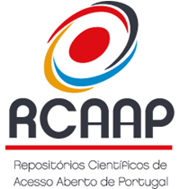EFFECTS OF TRADITIONAL CHINESE MEDICINE SHANG HAN LUN FORMULAS IN THE TREATMENT OF INFLUENZA LIKE ILLNESS CONDITION (ILI)
DOI:
https://doi.org/10.25746/ruiips.v4.i3.14473Keywords:
Traditional Chinese Medicine, Chinese herbal medicine, Shang Han Lun, Influenza, Chinese classic formulas, Medicina Tradicional Chinesa, Medicina Herbal Chinesa, Fórmulas clássicas da Medicina tradicional ChinesaAbstract
Resumo
A gripe é uma doença infecciosa, aguda, transmissível que durante uma epidemia pode causar elevada morbilidade e mortalidade. Desde 1949, a OMS estabeleceu uma rede internacional de vigilância da actividade gripal feito pela integração da informação virológica per se ou em combinação com a informação clínica obtida em pacientes diagnosticados com a “doença semelhante à influenza” ou “sindroma gripal”.
A Medicina Tradicional Chinesa (MTC) considera a influenza uma patologia externa causada por factores patogénicos e desenvolveu há milhares de anos um sistema especialmente orientado para a sua prevenção e tratamento descrito no “Shang Han Lun”. O objectivo deste estudo foi o de avaliar os efeitos de fórmulas clássicas do Shan Han Lun prescritas de acordo com os seus princípios versus regimes convencionais correntes, no tratamento da Sindroma Gripal em pacientes que recorrem ao tratamento da MTC.
Sessenta pacientes da Escola de Medicina tradicional Chinesa e de Clínicas de Profissionais da Associação Portuguesa de Acupunctura e MTC, em Lisboa que apresentavam síndroma gripal foram distribuídos aleatoriamente pelo Grupo Experimental e Controlo. Após os primeiros três dias de início da patologia foi observado uma taxa de recuperação clínica significativamente diferente no grupo experimental versus controlo e verificado que as fórmulas clássicas do Shang Han Lun podem tratar a síndroma gripal se utilizadas de acordo com o método de decisão clínica implícito no Clássico da MTC.
Abstract
Influenza is an acute respiratory communicable disease which, during epidemics, can cause high morbidity and mortality. Since 1949, WHO established an international network for the surveillance of influenza mainly based on sentinel physician’s report of clinical cases of ILI (influenza-like illness) to a central registry. Traditional Chinese Medicine (TCM) considered this condition as an externally contracted disease caused by pathogenic factors and have developed from thousands years ago a rich system for its prevention and treatment expressed in the “Shang Han Lun”. The purpose of this study was to assess the effects of Chinese medicinal classic formulas according to TCM principles of “Shang Han Lun” in treating Portuguese patients with established diagnosis of ILI condition by comparing it with western current treatment regimens.
Sixty patients from the Clinic of TCM College of Lisbon and from the clinical sets of Portuguese Association of Acupuncture and TCM in Lisbon region that have ILI condition were randomized allocated to an Experimental and a Control Group. After the first three days it was observed that the recovery rate was significantly different in experimental versus control group and classic formulas of “Shang Han Lun” can treat ILI conditions if used with the clinic decision through method that is implicit in this Classic monograph.
Downloads
How to Cite
Issue
Section
License
Authors publishing in this journal agree to the following terms:
Authors retain copyright and grant the journal the right of first publication, with the article simultaneously licensed under the Creative Commons Attribution License that allows sharing of the work with acknowledgement of authorship and initial publication in this journal.
Authors are permitted to enter into additional contracts separately for non-exclusive distribution of the version of the article published in this journal (e.g., publish in an institutional repository or as a book chapter), with acknowledgment of authorship and initial publication in this journal.
Authors have permission and are encouraged to publish and distribute their work online (e.g., in institutional repositories or on their personal webpage) at any point before or during the editorial process, as this may generate productive changes, as well as increase the impact and citation of the published work.




